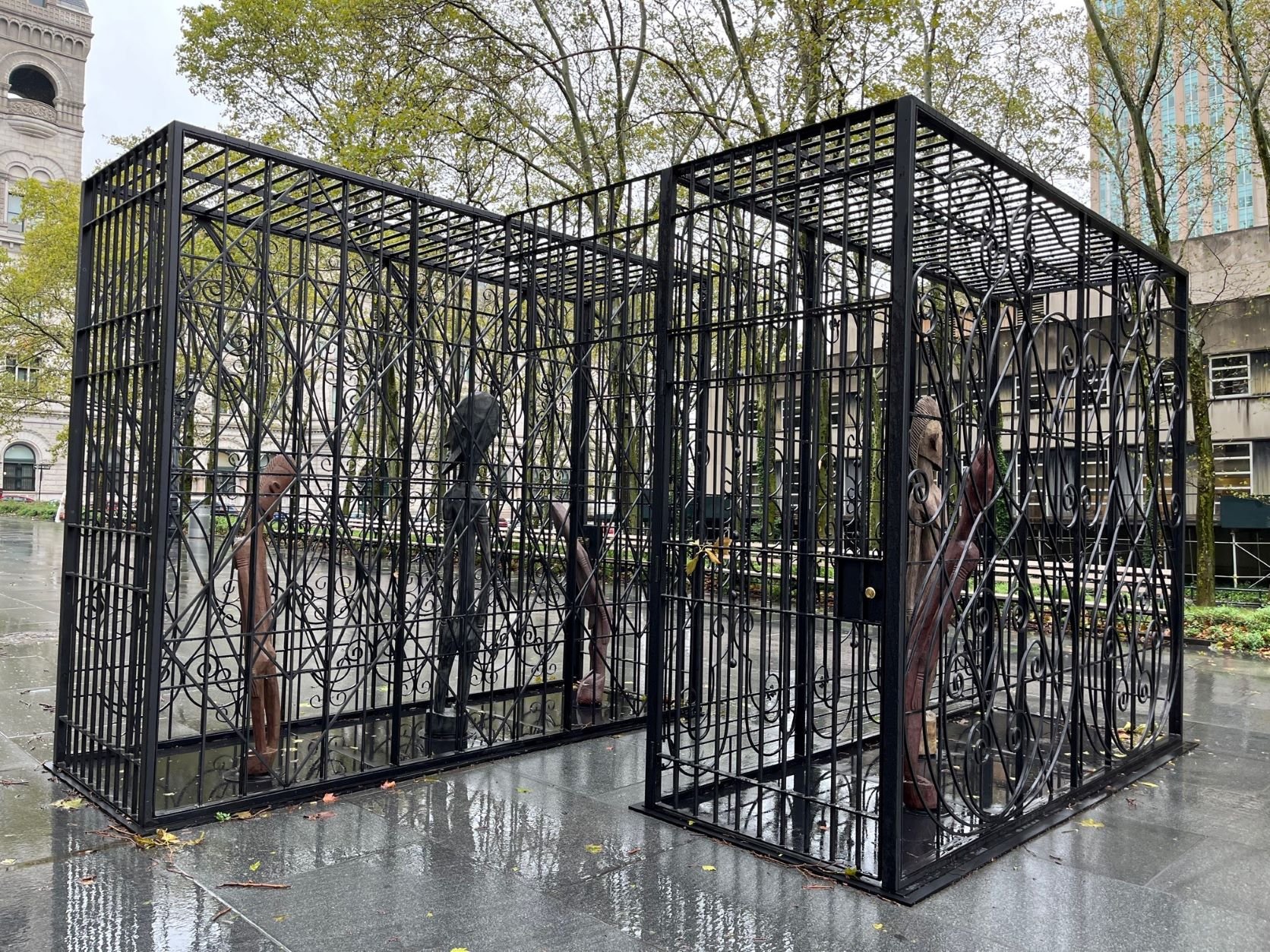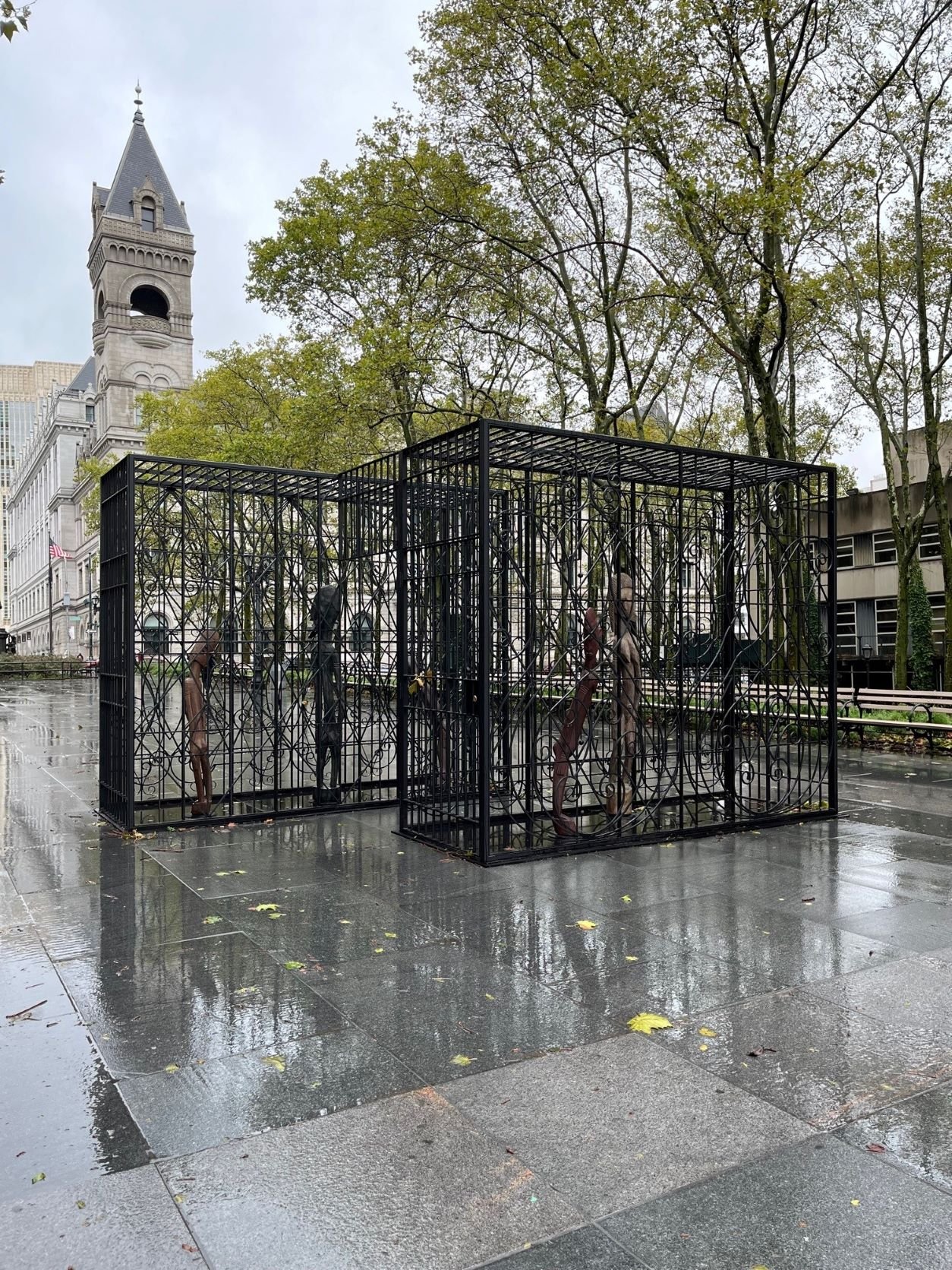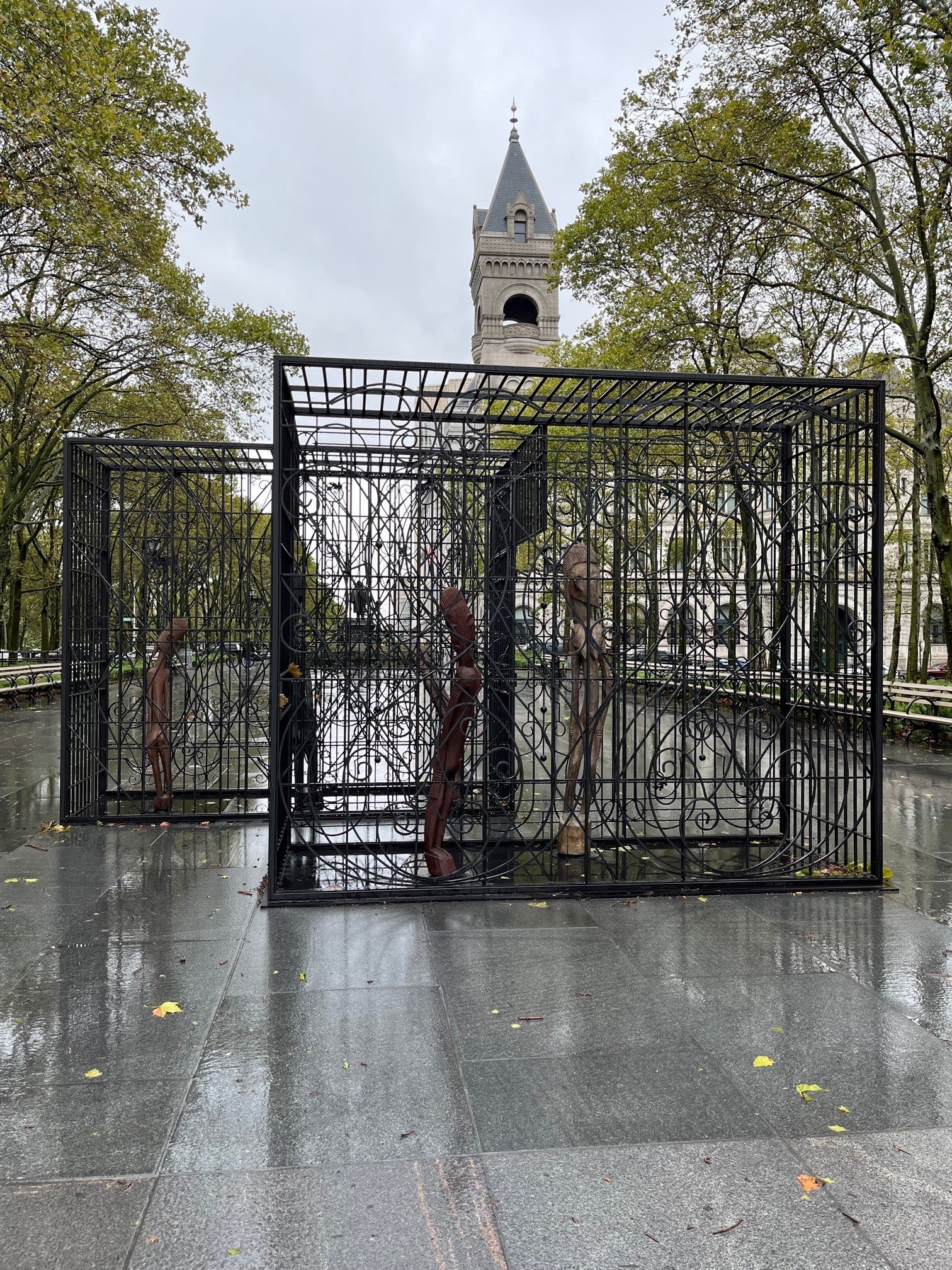Standing ten feet tall in Brooklyn’s Columbus Park, Fred Wilson’s large-scale public sculpture “Mind Forged Manacles/Manacle Forged Minds” demands the viewership and consideration of all who pass by. Not simply because of its size, but rather because of its meaning and placement: Columbus Park is lined with historical monuments and memorials, many of which are highly contested. Controversial due to their roles in slavery, anti-abolitionist work, and violent legacies of racism, historical figures like Christopher Columbus and Henry Ward Beecher stand erect in the park, with “Mind Forged Manacles/Manacle Forged Minds” existing in opposition to them as a site-responsive intervention. Five dark figures stand locked inside two boxes, a signifier evoking themes of detainment, incarceration, and structural racism. This sculpture is an essential contributor to dialogues surrounding both monuments and the politics of erasure and exclusion in public spaces, as well as mass incarceration of Black bodies in the United States, the work having been developed in collaboration with youth at the Center for Court Innovation, an alternative-to-incarceration program. Wilson’s work prompts us to question ideas of historical memory, ideas of significance, ideas of freedom, and of how we determine who is deserving of such statuses.
"Mind Forged Manacles/Manacle Forged Minds" by Fred Wilson



